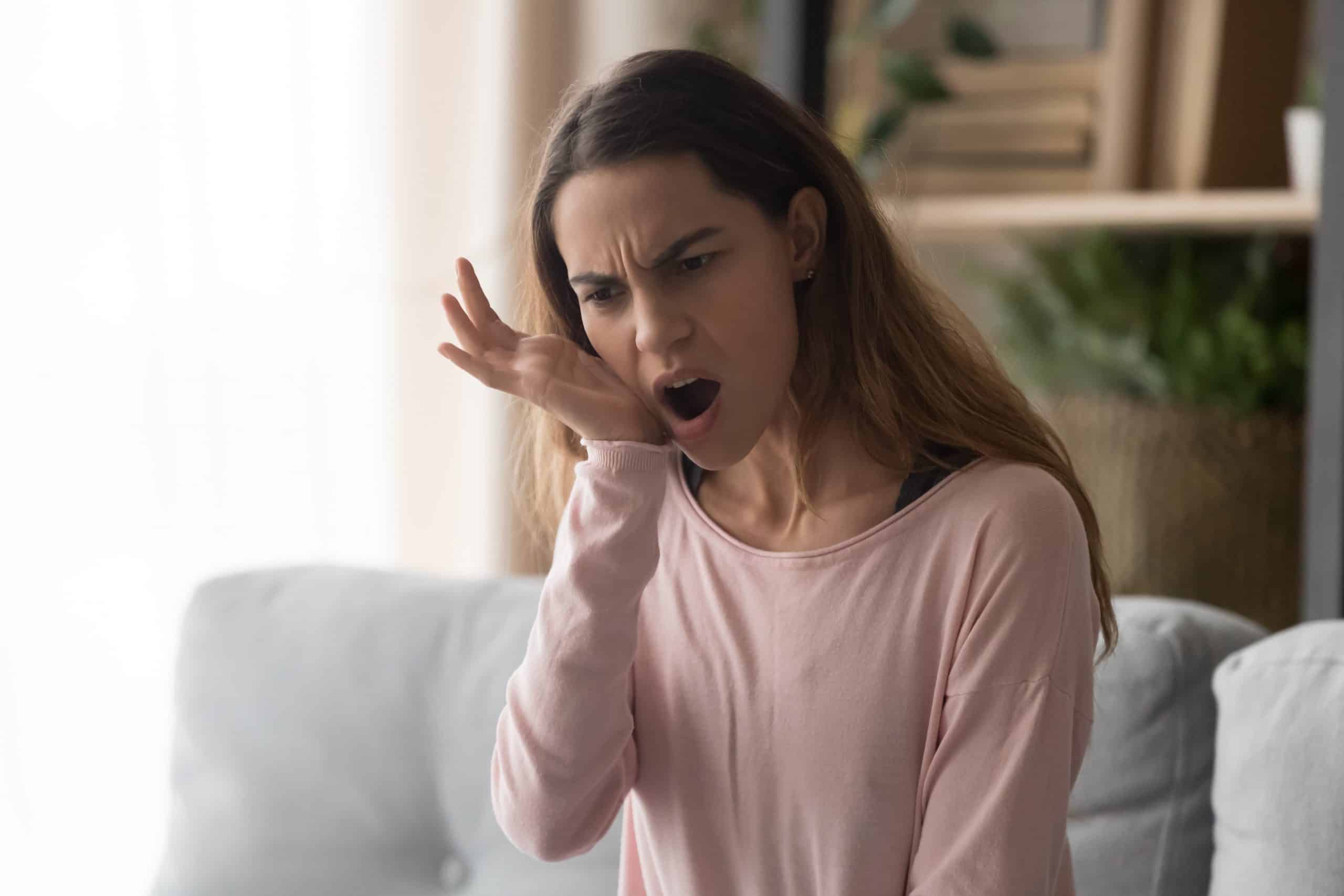Do you experience jaw pain? If you feel like you have tried every trick in the book to fix this, this jaw pain could be TMJ Disorder.
What is a TMJ Disorder?
TMJ Disorder (TMD) is caused by the improper function of the temporomandibular joint. Over-active muscle contraction or overuse due to stress and grinding is a common cause of TMD.
Located at the sides of your head in front of your ears, the temporomandibular joints are used every time you move your mouth. Therefore, this activity gives your TM joints a full workout. Anything that moves them out of alignment puts additional wear and tear on the joint tissues.
Causes of TMJ Disorders
Common causes of TMJ Disorders are:
- teeth grinding
- trauma (fractures, dislocation and muscle tears)
- habitual jaw clenching (bruxism)
- and dental procedures
TMJ Disorder Symptoms
Symptoms of TMD include aches and pain in the jaw, along with headaches, neck pain and sometimes locking of the joint. TMD symptoms occur when the joints that hinge your lower jaw to your skull malfunction. This causes TMJ pain, stress and inflammation on the surrounding tissues and nerves.
Other symptoms of TMJ disorder can include—ringing in the ears, jaws that make popping or clicking noises when you open them, difficulty or pain when chewing and dizziness
How can your physio help?
Our bodies function best when all of the joints move in proper alignment. For the head, neck, shoulders and jaw, this means the ears should be held vertically in line with the spine and shoulders. But some people develop a habit of holding their heads forward of their shoulders. For instance, this can occur form spending hour at the computer, and may not be as simple as just ‘sitting up straight’.
Known as the head forward posture, this is one of the most frequent types of bad posture, and the one most likely to contribute to TMJ disorder. This posture puts excessive strain on the muscles and joints in the back of the neck and increases tension in the upper trapezius muscle.
Since these muscles connect with and influence the activity of the jaw muscles, TMJ disorder is likely to occur along with the head forward postures. Therefore, a key solution in the treatment of TMJ disorder is to, in fact, correct your posture.
An assessment of your joint and spinal alignment will determine if any remedial adjustments are required. We recommend consulting with a physiotherapist.This will ensure that musculoskeletal malalignments can be corrected before progressing with exercises.
If you begin exercises when the spinal alignment is out, this can make the postural problem and symptoms worse. Fortunately, TMJ exercises and posture exercises that retrain, stretch and strengthen your muscles are simple to do. Performing these exercises regularly will help develop body awareness, improve your ability to move in proper alignment and maintain a healthy posture.
Need a Physio?
Our friends at Queen Street Physiotherapy are a part of our Bite Dental Healthlink. They are, in our humble opinion, the best physios in Brisbane! They have kindly offered all Bite clients 50% off their initial physiotherapy appointment! In these appointments, they will be able to work to correct your posture using their physiotherapy magic.
If you are interested in correcting TMD, or simple need to visit a physio, please don’t hesitate to speak to us at your next appointment, and we will book you in!


